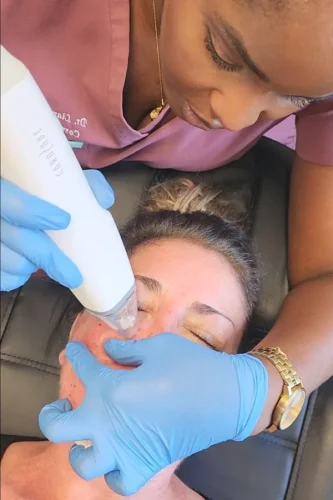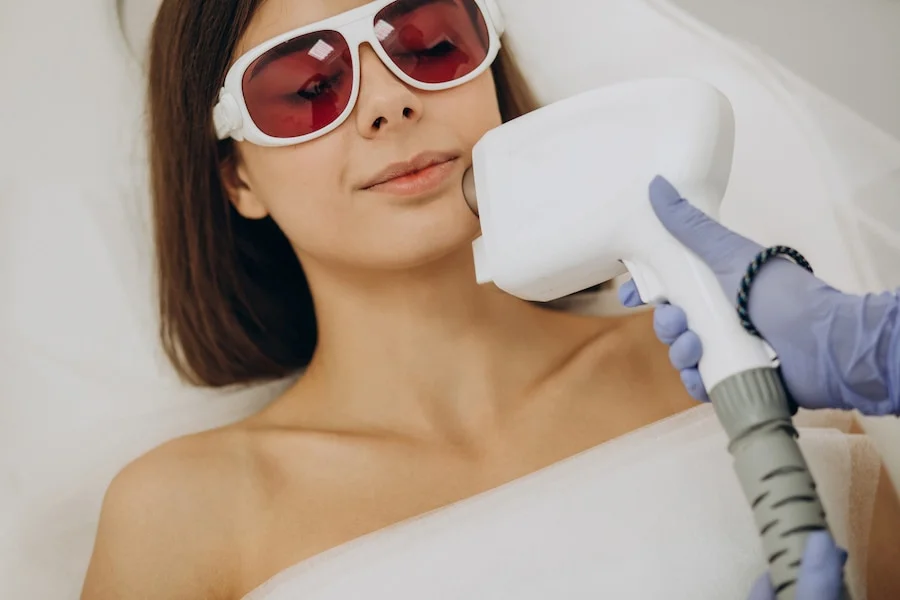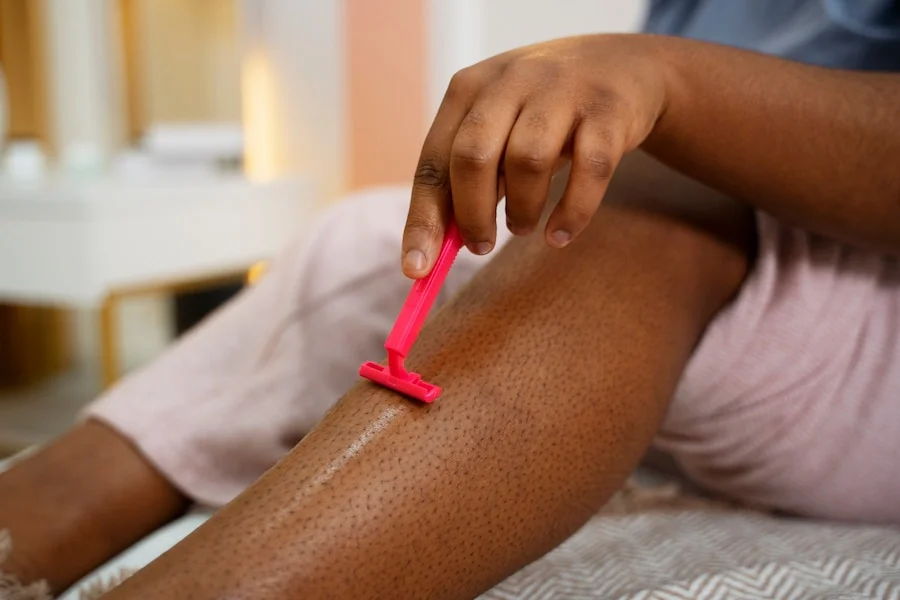As we age, collagen production slows down, leading to wrinkles, fine lines, and sagging skin. Fortunately, non-surgical skin tightening treatments like RF microneedling and Ultherapy have made it possible to restore skin firmness without invasive procedures.
Both Ultherapy and RF microneedling work by stimulating collagen production, but they do so in different ways. Ultherapy uses ultrasound energy to penetrate deep into the skin and trigger a lifting effect. RF microneedling, on the other hand, combines microneedles with radiofrequency energy to remodel collagen at multiple depths, improving both skin laxity and texture.
So, which one is the better choice for skin tightening? The answer depends on your skin concerns, comfort level, and desired results.
Quick one, before we dive into this article. Our clinic in Limoges, Ontario offer Potenza Rf microneedling treatment for various skin concerns, no matter your skin tone. If you looking to address any skin concern you may have, We’ve got you covered – Book An Appointment Today!
Table of Contents
ToggleHow RF Microneedling and Ultherapy Compare
RF microneedling and Ultherapy are both non-invasive treatments that stimulate collagen production, but they work in distinct ways.
Ultherapy uses ultrasound energy to penetrate deep into the skin, reaching the foundational layers where it triggers a lifting and tightening effect. This makes it a popular choice for addressing moderate skin laxity, particularly on the face, neck, and décolletage. However, because the ultrasound energy targets deeper layers, some patients report more discomfort during the procedure.
RF microneedling, on the other hand, combines microneedling with radiofrequency energy to create micro-injuries in the skin while simultaneously delivering heat to the dermis. This dual action stimulates collagen and elastin production, improving skin texture, reducing fine lines, and tightening loose skin.
Unlike Ultherapy, RF microneedling works on both the surface and deeper layers of the skin, making it effective for treating wrinkles, acne scars, and overall skin quality. It is also considered more comfortable and has a shorter recovery time, with mild redness and swelling that typically subside within a few days.
While both treatments are effective for skin tightening, RF microneedling offers additional benefits, such as improving skin texture and tone, minimizing scars, and reducing pore size (Does RF microneedling reduce pore size? Not exactly. Pores don’t physically shrink, but as the skin tightens and firms, they appear smaller and less noticeable).
It is also more customizable, as the depth of the needles and intensity of the RF energy can be adjusted based on the patient’s specific needs. Ultherapy, on the other hand, is often chosen for deeper skin laxity concerns, particularly for lifting sagging skin in areas like the jawline and brows.
Ultimately, the choice between RF microneedling and Ultherapy depends on individual skin concerns and treatment goals.
However, many prefer RF microneedling, particularly Potenza RF microneedling, due to its ability to enhance skin quality while providing noticeable firming effects with minimal discomfort and downtime.

Learn More About Potenza:
What is Potenza RF Microneedling: The Secret To Flawless Skin
Is RF Microneedling Better Than Ultherapy?
Both treatments have their strengths, but RF microneedling offers more versatility by improving not just skin laxity but also fine lines, wrinkles, and acne scars. Unlike Ultherapy, which focuses primarily on lifting, RF microneedling enhances skin texture and tightness while also addressing concerns like large pores, stretch marks, and scarring.
Additionally, Potenza RF microneedling offers unique technology, such as fusion tip delivery for enhanced serum absorption and four RF modes for customized treatments. This makes it an excellent option for all skin types, including darker skin tones, which some energy-based treatments struggle with.
If you’re exploring alternatives to Ultherapy, our medical aesthetic clinic offers PDO thread lift as a great option.
While Ultherapy delivers immediate results, PDO thread lifting offers a longer-lasting solution for sagging skin and deep wrinkles.
Read:
Potenza RF Microneedling For Stretch Marks Treatment
Which Is Better for Skin Tightening: RF or Ultrasound?
If you have moderate to severe sagging skin, Ultherapy might be a better option because it works deep under the skin—at the same level as a facelift.
Learn more about PDO thread lifts for non-surgical skin lifts.
But if you want a treatment that tightens the skin and improves its texture, RF microneedling is the better choice. It’s also less painful and has a faster recovery time.
Can I Do RF Microneedling After Ultherapy?
Yes, RF microneedling can be safely performed after Ultherapy if needed. However, many patients find that a well-planned series of RF microneedling treatments provides similar or better results without the discomfort associated with Ultherapy.
If you’ve had Ultherapy and still want to refine your skin’s texture, tone, or elasticity, RF microneedling can be a complementary treatment to enhance your results.
How Long Does Results From Rf Microneedling and Ultherapy Last?
Ultherapy results can last up to 1–2 years, depending on individual factors such as age, collagen production, and skincare routine.
Since collagen naturally continues to degrade with age, maintenance treatments are usually needed.
RF microneedling, on the other hand, can be done in a series (3–4 sessions) followed by annual maintenance to sustain collagen stimulation and maintain a youthful, refreshed appearance.
You can book an Rf microneedling appointment at our clinic to speak with a physician regarding your skin tightening concern.
Related Article:
Does RF Microneedling Burn (Facial) Fat?
Choosing the Right Skin Tightening Treatment
When choosing between Ultherapy and RF microneedling, it’s important to consider your specific skin concerns.
If you need deep skin lifting, Ultherapy might be the better choice. However, if you’re looking for both skin tightening and texture improvement, RF microneedling is the ideal option.
Pain tolerance is another factor to keep in mind. RF microneedling is generally more comfortable, while Ultherapy can be more painful without proper pain management. Recovery time also differs—RF microneedling typically causes mild redness and swelling for a few days, whereas Ultherapy may leave the skin tender for up to a week.
Both treatments boost collagen production, but RF microneedling offers additional benefits by improving surface concerns like scars, pores, and fine lines.
At Dr. Lian Beauty in Limoges, Ontario, we specialize in Potenza RF microneedling, an advanced RF technology designed to deliver customized skin tightening with minimal downtime.
Ready to explore your options? Book a consultation today!

Dr. Lian Peter, MD, MPH, CCFP, is a Family physician with a passion for aesthetics. In her aesthetic clinic, she provides a wide range of minimally invasive and non-invasive procedures, constantly honing her skills to deliver exceptional care and help patients attain their desired appearance.





